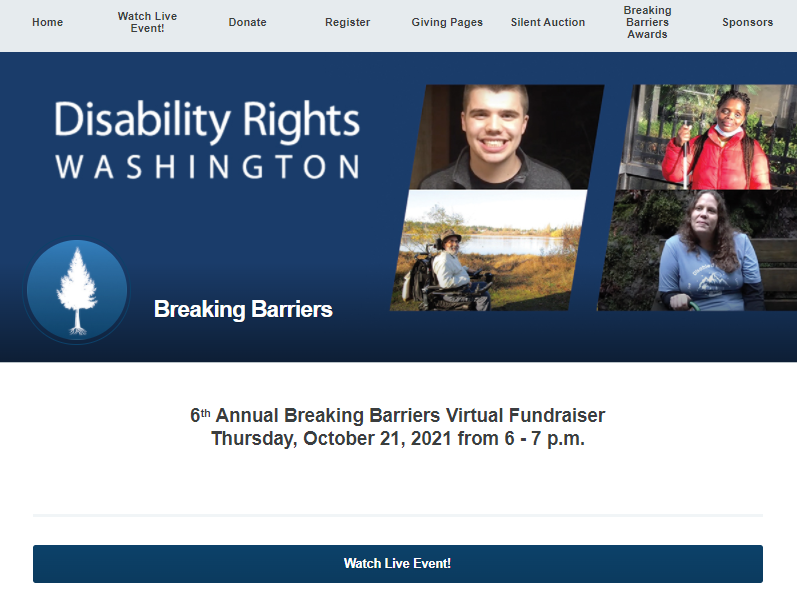From the time we added this topic to our content calendar to the time of publishing, COVID-19 case numbers began to steadily increase as the holidays approached, which gave us a clear answer to the question in this blog’s title: Yes. Virtual fundraising is still needed.
Even when case numbers are dropping, it’s important to remember the unpredictability of variants and the uptick in case numbers when there are holidays during which friends and family come together. Outside of the influence of COVID, virtual fundraising offers a slew of benefits that can increase your nonprofit’s reach and revenue. Read on to learn why you should keep virtual fundraising as an option.
If you’re looking for ideas for a virtual event (or for one you need to quickly shift to virtual), try our list of 25 virtual fundraising event ideas or 30+ virtual peer-to-peer event ideas articles to help you get started.
You don’t want to host a super spreader event
A single event can cause COVID-19 numbers to surge in communities. Don’t let this be caused by your event! Keep things virtual or host a hybrid event that includes virtual elements like a livestreamed version of your event to encourage at-risk individuals to stay home while still supporting you.
Setting up hand sanitizer stations and requiring masks and social distancing may work for most people, but for those who are immunocompromised, even the strictest adherence to safety guidelines may not be safe. Instead of missing out on these guests, hosting virtual events or including virtual elements empowers people to participate from where they’re comfortable. Whether that means taking part at the park or parked on the couch, your guests should be able to attend in a way that doesn’t take them outside of their comfort zone.
Looking for more tips to keep event guests safe during the pandemic? Check out our event risk mitigation blog post. It includes information on how to keep your in-person attendees safe and even suggests using virtual or hybrid event formats during the pandemic.
Virtual events make you more accessible
If you want to reach more people, don’t forget about those who can’t attend in-person events. There are those who may not be able to attend in person because of living out of the area or because of medical or other reasons. You don’t want to discourage these people from giving. That’s where virtual event elements come in. You can keep them safe and happy as participants in your event by offering a way for them to participate virtually from wherever they are.
Disability Rights Washington did an exemplary job of this when hosting their Breaking Barriers fundraiser. This annual event included a virtual silent auction that attendees could watch live from home. This meant that no one was excluded from the live event and donations and bids could come from wherever donors participated from. This made it possible for Disability Rights Washington to raise more than $84,000 without constituents participating in person.
Disability Rights Washington went even further to ensure their event was accessible. They wrote their content so that it was easy for screen readers to provide useful information to those using them. They included image descriptions on the page so that screen readers could describe the images used on the page to visitors with vision impairments.
Virtual elements can earn your nonprofit more donations
According to our Navigating the Unknown Report, more than 50% of nonprofits included a virtual element in their fundraising events in 2020. While some of this can be attributed to an abundance of caution, others noticed a simple truth: including virtual participants earned them more donations.
In 2019, before virtual events were mainstream, the average donation amount was $87.46 on the Qgiv platform. When nonprofits implemented virtual events in 2020, the average donation amount increased to $108.62, meaning that virtual donors gave more than in-person event attendees did the year before.
Virtual events were crucial to many nonprofits at the height of the pandemic. More than half of the nonprofits we surveyed for the Navigating the Unknown Report switched to virtual events during the pandemic. Of the nonprofits surveyed, 69.9% indicated they would host virtual or hybrid events in 2021. Why? Because these event types worked for them! Not only did including virtual fundraising elements help these nonprofits raise more money, virtual events often have lower overhead, meaning they cost less to put on. Why? There was no cost of catering, event venue rental, or other expenses that are common with in-person events.
Final thoughts
We hope this blog has given you some food for thought regarding virtual fundraising. Including virtual elements can help keep guests safe and satisfied with your event. They’re especially great for those who can’t attend your event in person. Plus, with virtual guests giving more on average than in-person participants, chances are you’ll see your event revenue grow by continuing to offer virtual participation options now and when the pandemic ends. Even when it feels like we might be out of the woods, virtual elements can serve your fundraising efforts well.
Need a virtual fundraising event platform to help you host a stellar event? Request a demo!



